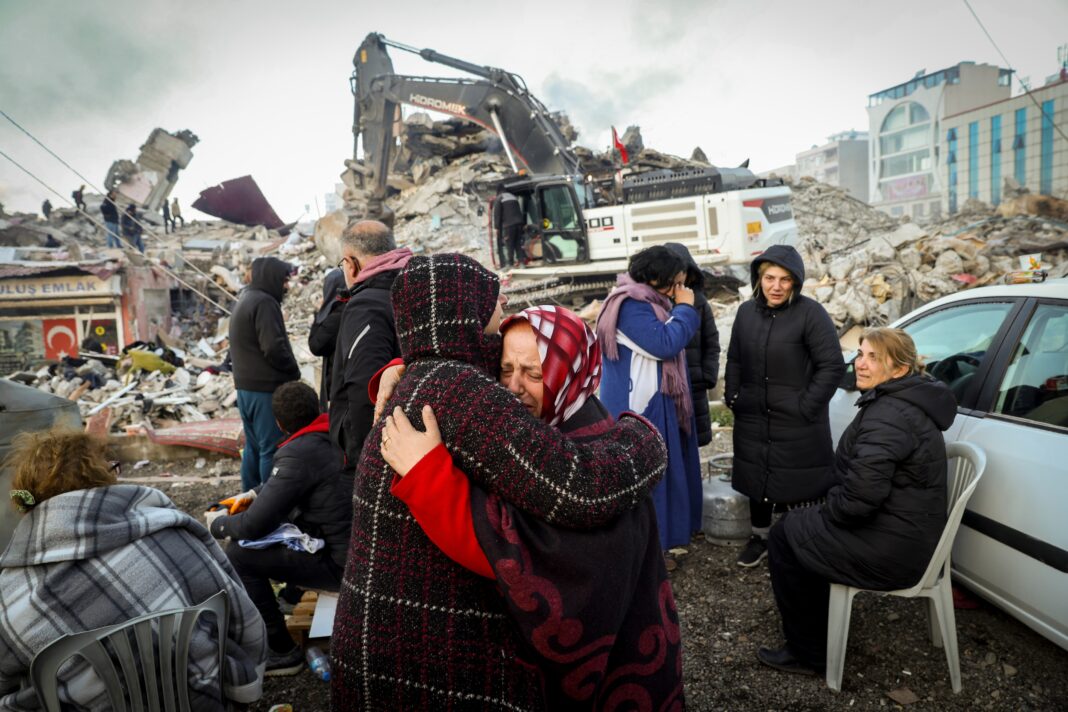by Ambra Visentin
On 6 February 2023, two devastating earthquakes measuring 7.8 and 7.5 struck the region bordering Turkey and Syria. The United Nations described it as one of the worst natural disasters in the history of both countries and a huge humanitarian challenge.
The earthquakes claimed nearly 60,000 lives, injured more than 125,000 and left millions homeless. The impact on infrastructure was also devastating. The earthquakes damaged or destroyed more than 300,000 buildings, including many homes, public facilities such as schools and hospitals, industrial plants, and many cultural and historical sites. More than 1,000 kilometres of roads, hundreds of bridges, several railway lines and airports were destroyed, hampering immediate rescue and relief efforts. The earthquakes and the thousands of landslides that followed also caused further damage and limited access to some areas. They also disrupted electricity, water and communications across much of the region. The UN recently estimated the total economic damage at up to $100 billion. Around three million people have left the earthquake zone and moved to other parts of the country. Many people were buried or trapped under the rubble. The search for survivors continued for several weeks, but was hampered by aftershocks, bad weather, political tensions and the Kovid pandemic.
The situation today
One year after the earthquake, the situation on the ground is still difficult. The effects of the earthquake are far from over. Many people are still living in temporary shelters and containers, suffering from malnutrition, lack of access to clean water and sanitation, and violence and discrimination.
Reconstruction has been slow and inadequate. Many buildings have not yet been rehabilitated, meaning that many people still lack adequate housing or jobs, and many health and social services are still not functioning or accessible. According to a report by the UNOCHA in December 2023, reconstruction efforts in Turkey and Syria have fallen far short of expectations.
In Syria, an estimated 16.7 million people (8.4 million women and 8.3 million men) will be in need of humanitarian assistance in 2024, up from 15.3 million in 2023. Of these millions in need, 5.5 million are still displaced today.
In Turkey, some 230,000 buildings collapsed in the provinces of Hatay and Kahramanmaraş last February. Turkish President Recep Tayyip Erdogan promised to build more than 400,000 houses for earthquake victims within a year. About a year later, there are no official figures from the Turkish Ministry of Urban Development, but the president visited the region to open the first new settlements.
Researchers working on earthquake preparedness in the eastern Anatolian fault zone predicted a third of the actual casualties. A major factor in the carnage is the fact that construction standards were not applied everywhere, and that many buildings were built before they came into force. Few people are currently held accountable for substandard construction. So far, only private individuals have been prosecuted, not state officials. The construction sector is the mainstay of the Turkish economy and therefore of President Erdogan. Over the years, observers say, the sector has grown out of control and it is not uncommon for construction companies to have close ties to the highest political circles. There has also been a proliferation of illegal construction across the country, encouraged by politicians through so-called construction amnesties. These predate the Erdogan government.
Cover photo by FreelanceJournalist on Shutterstock

























